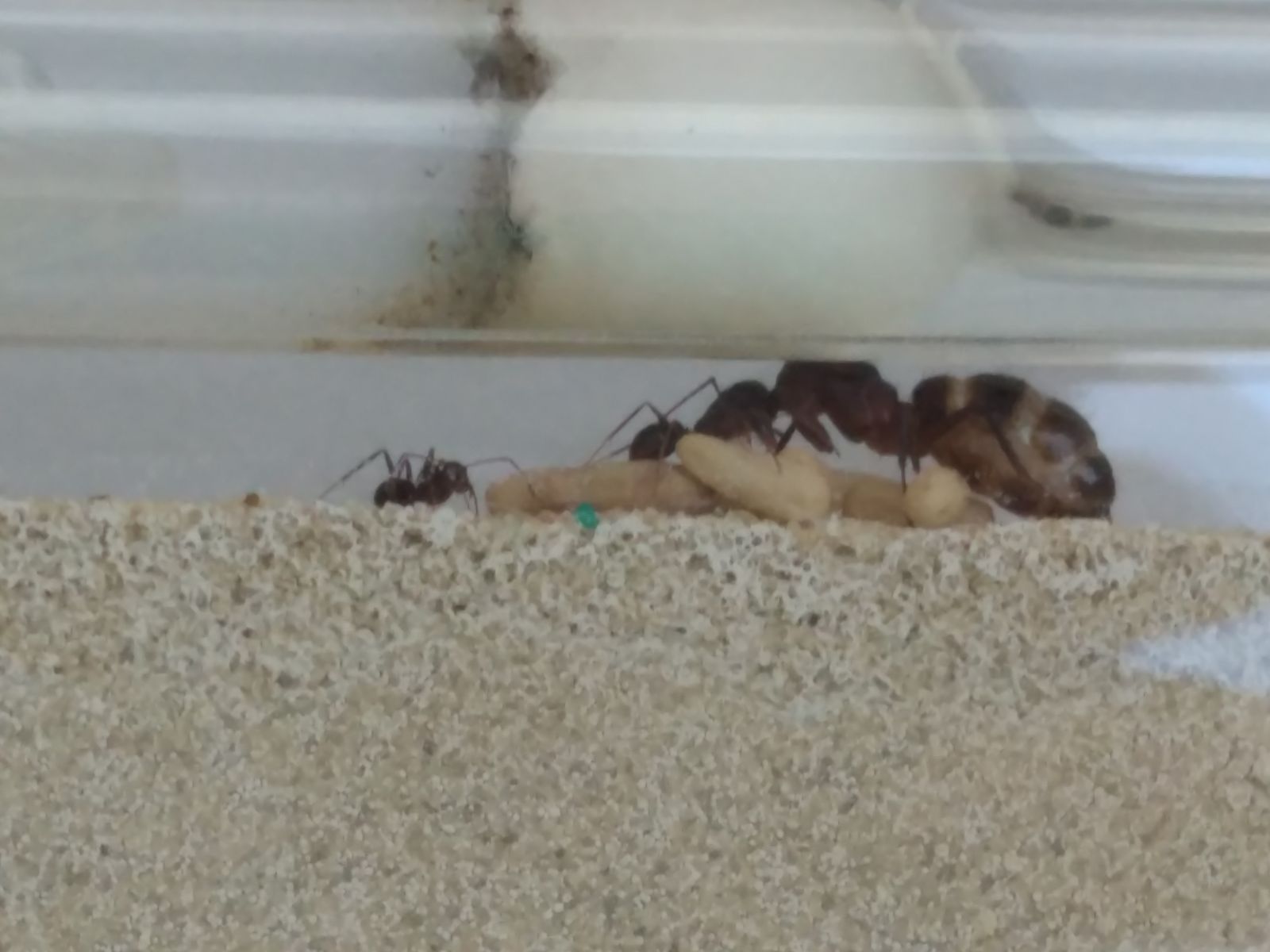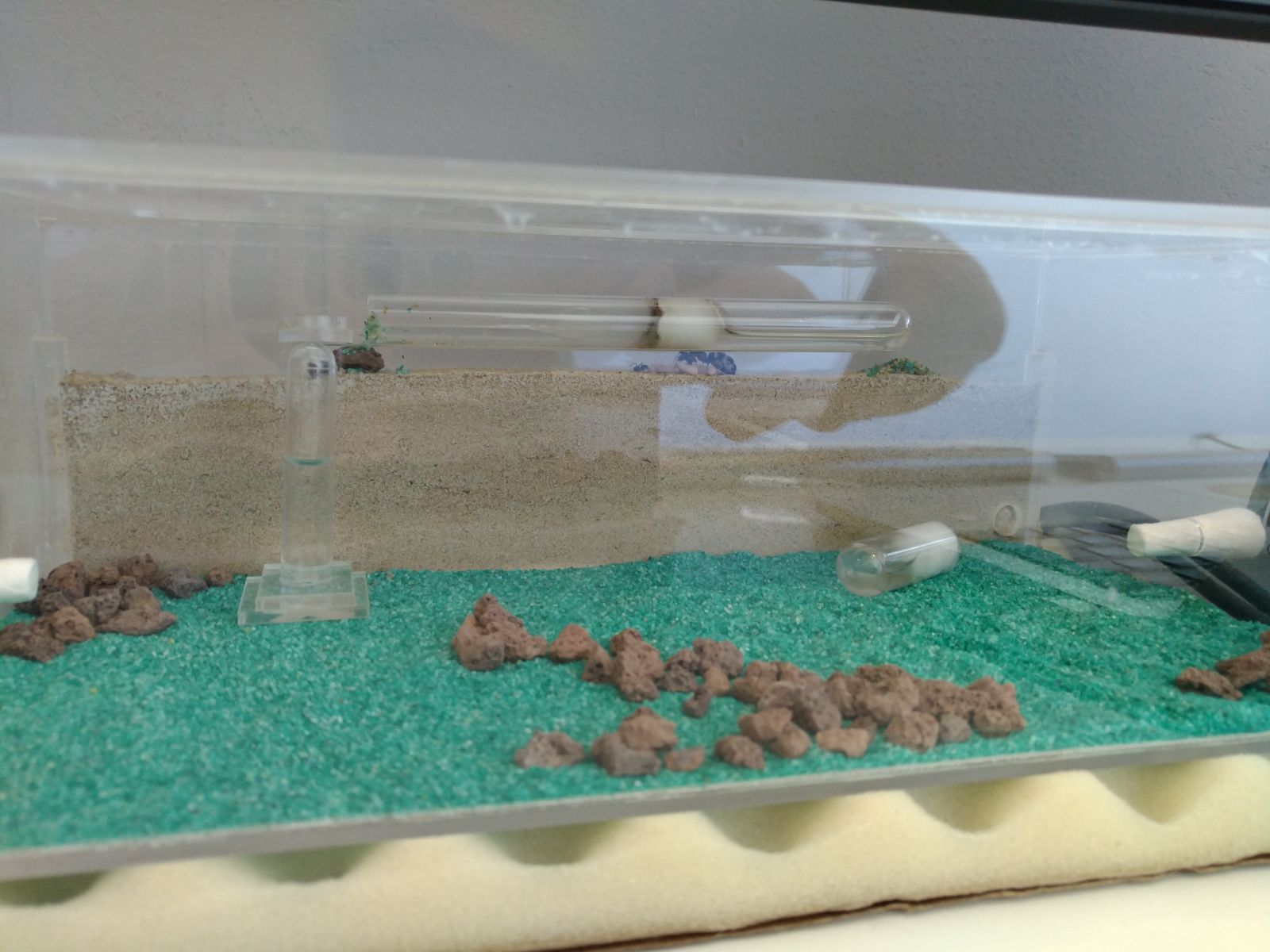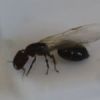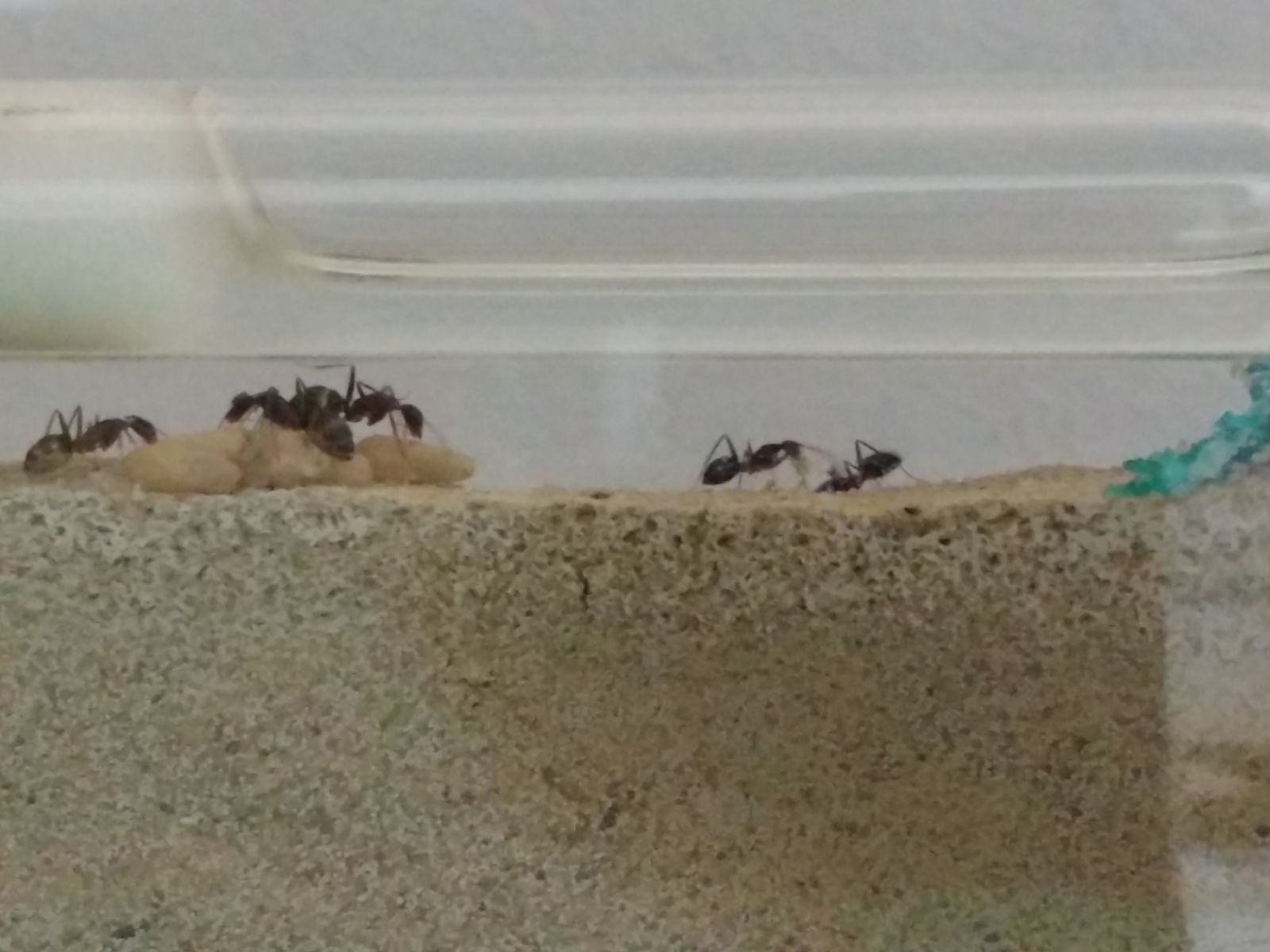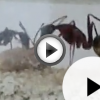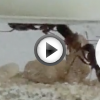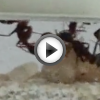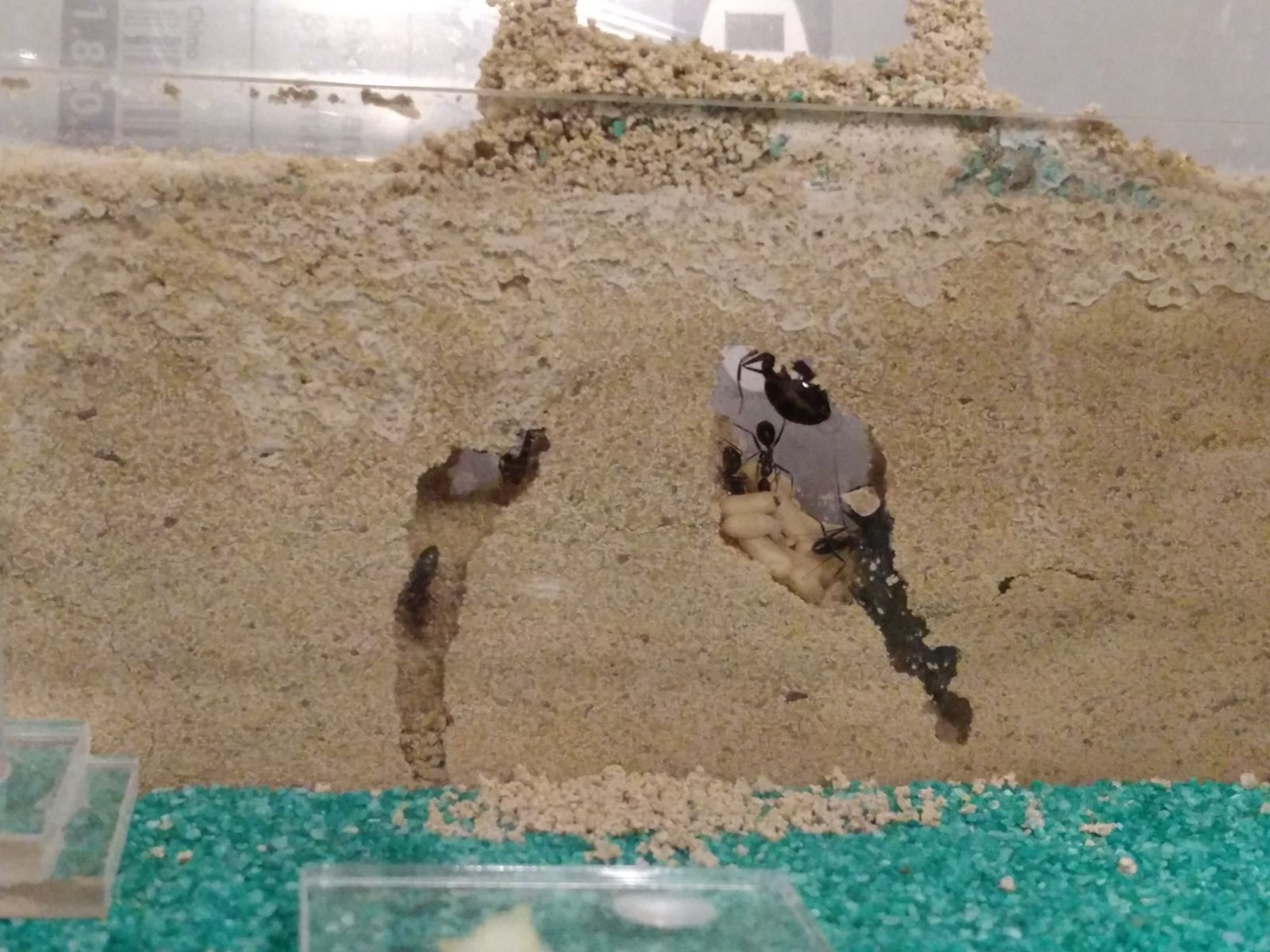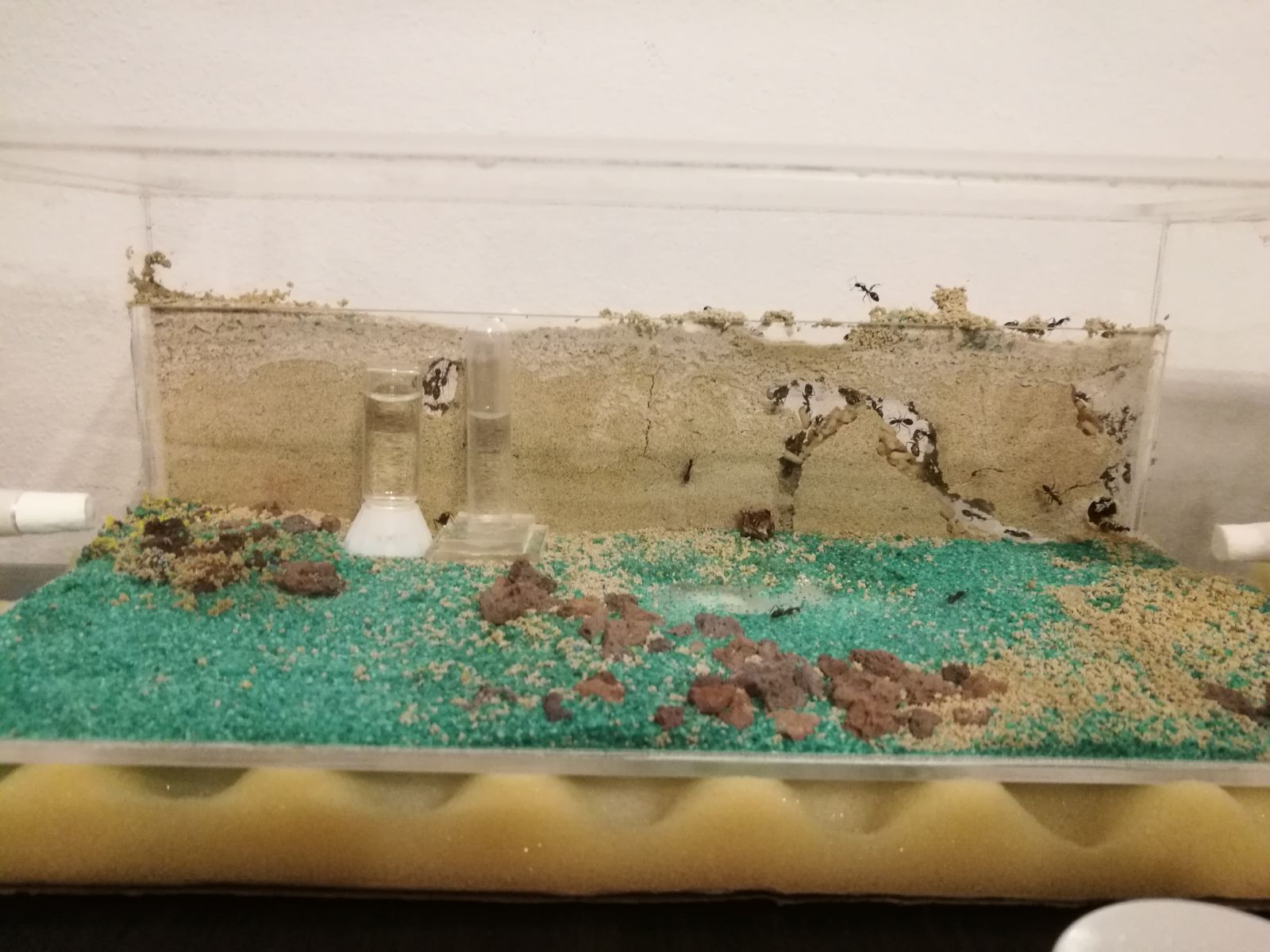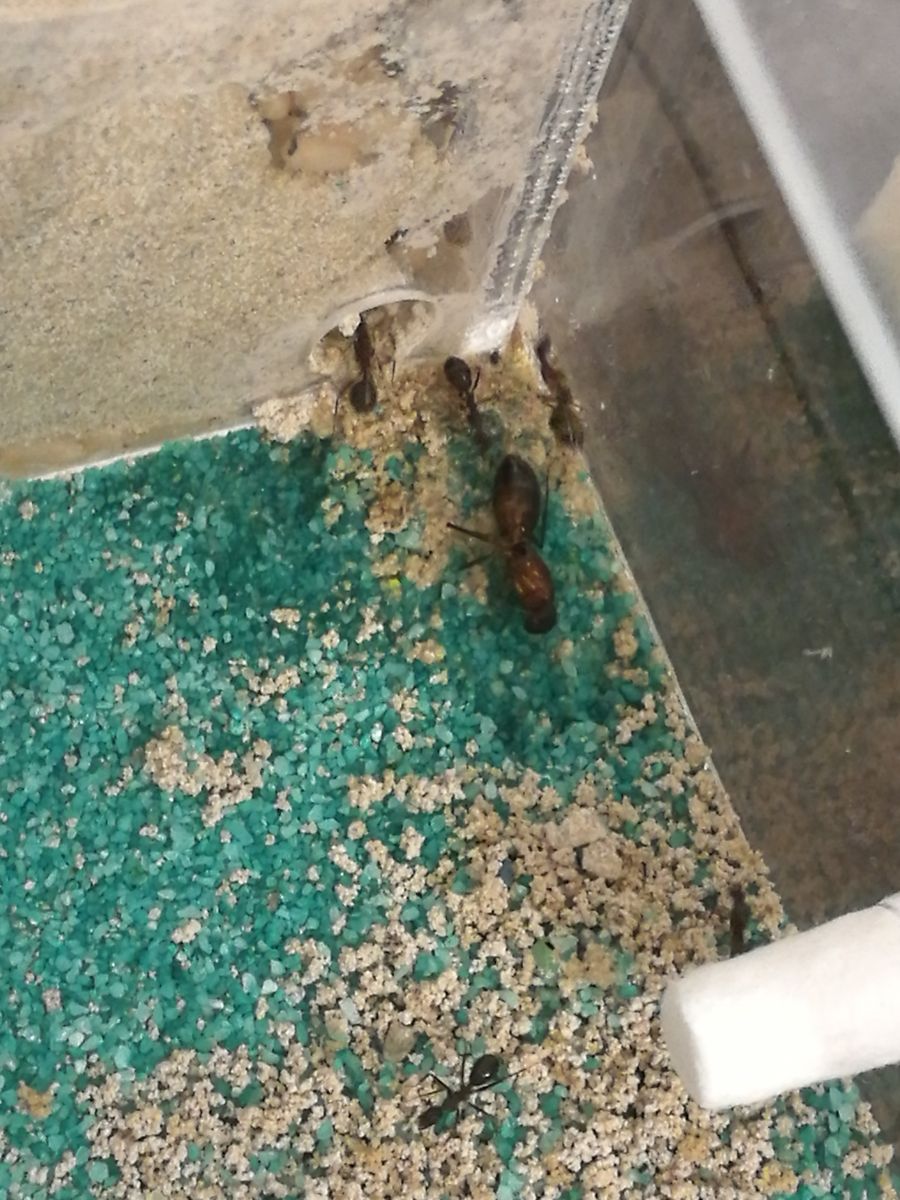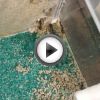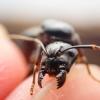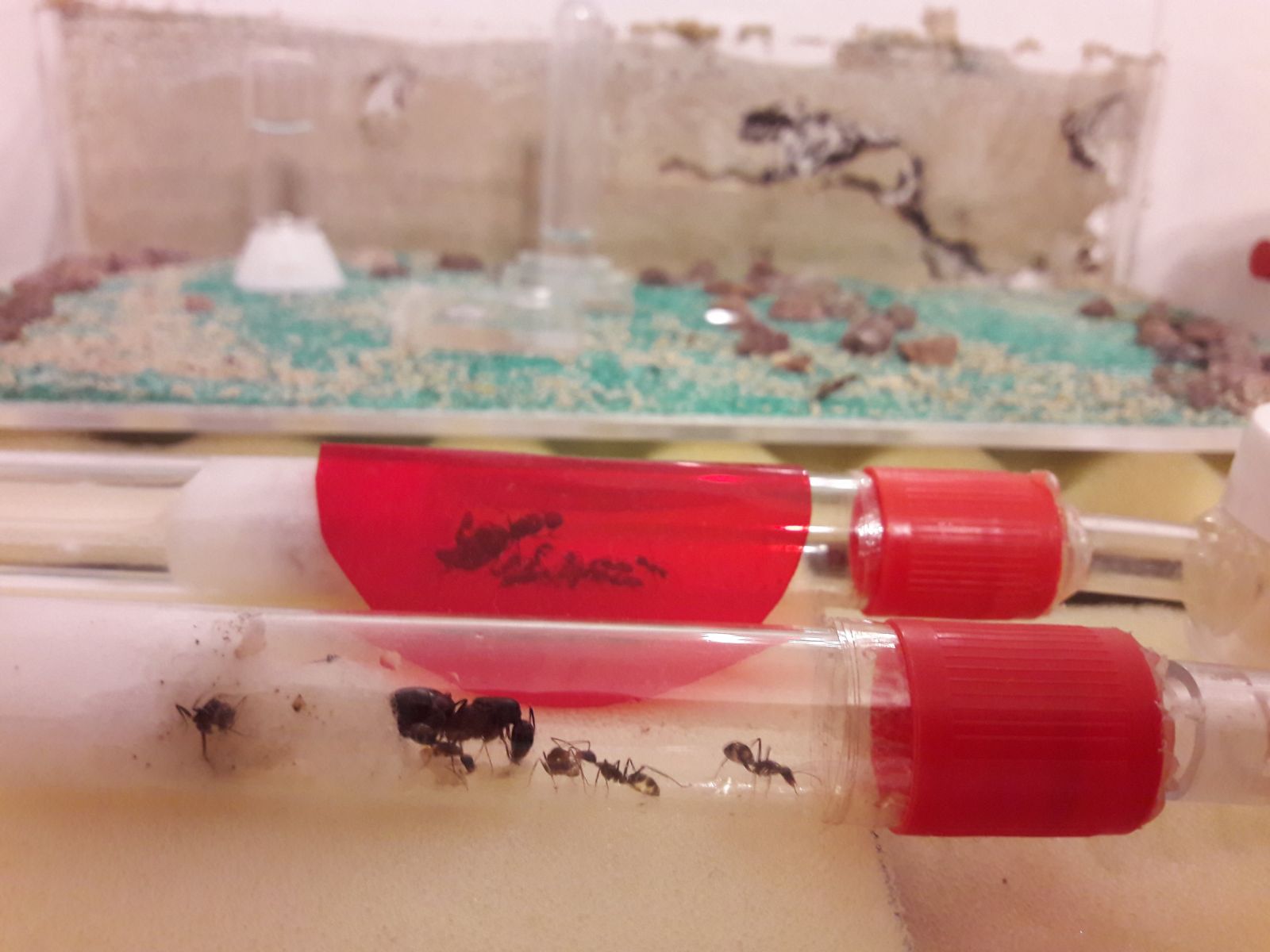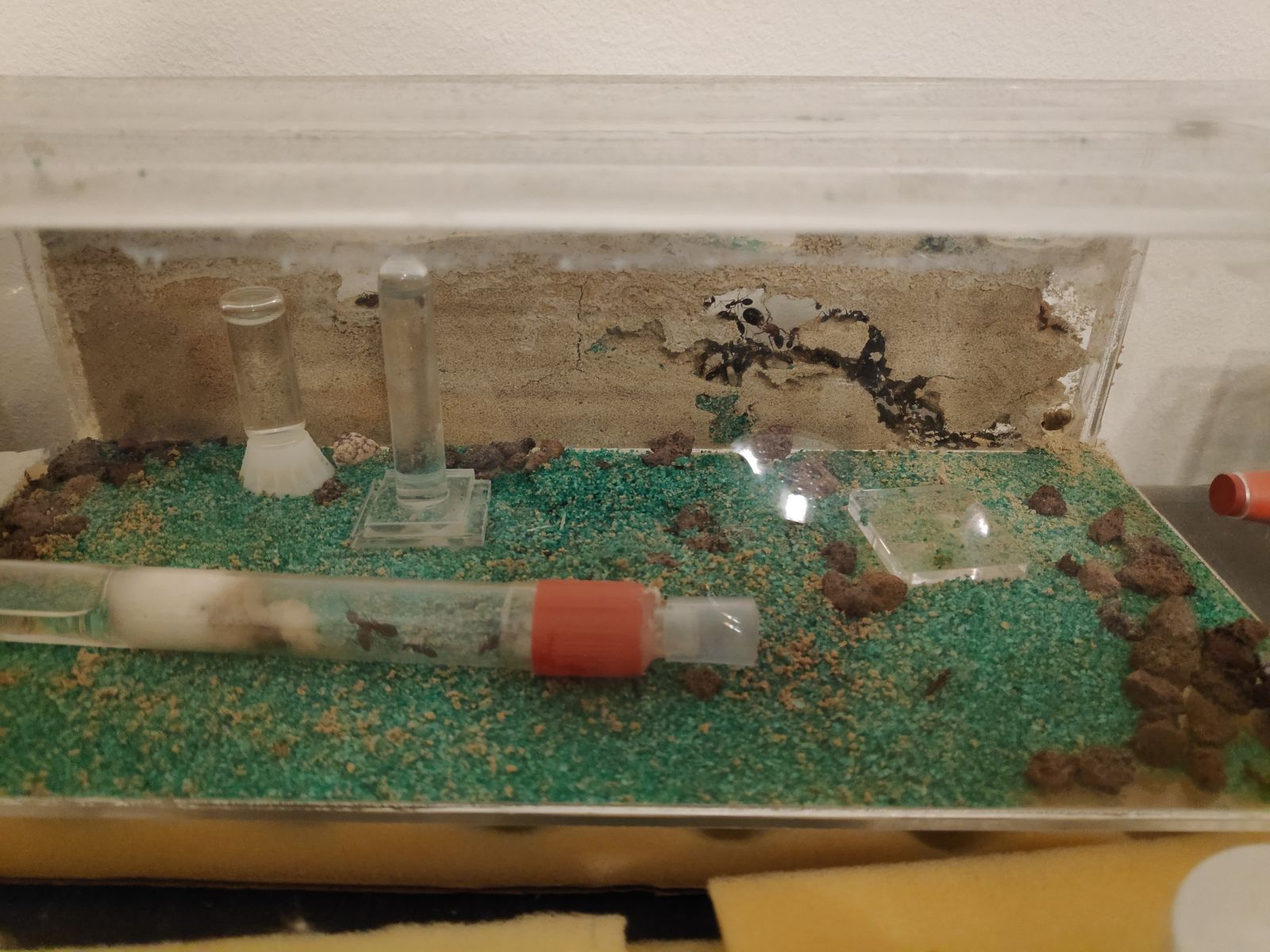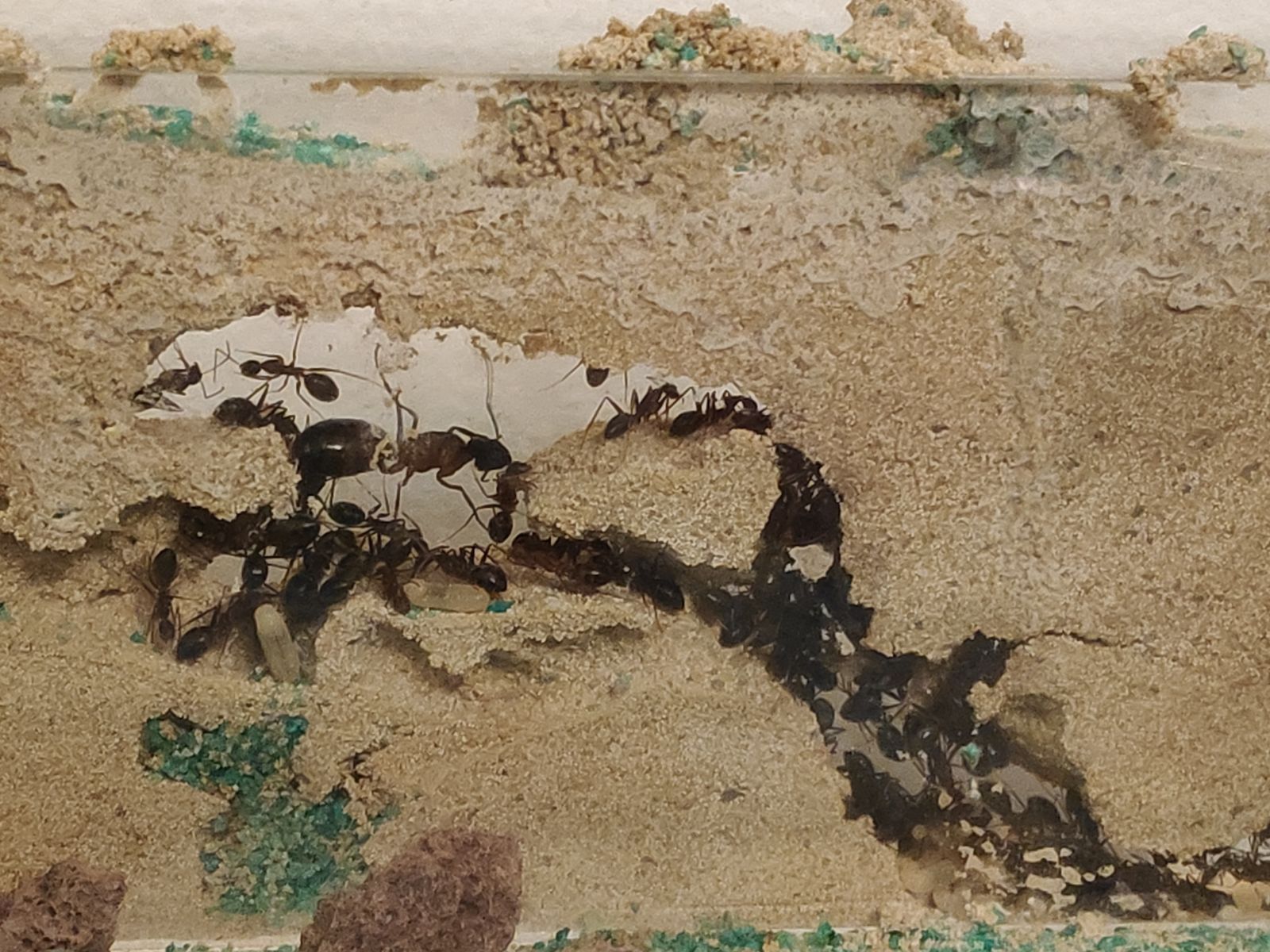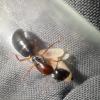This is my journal of a colony of Camponotus barbaricus I got from anthouse.es when I was ordering some stuff (including the formicarium from the photo).
It arrived with only one worker and some larvae. Three nanitics accompanied the queen in the end.
The queen is huge!
Once, as I was feeding them in their test tube, one of the nanitics ran out and got lost.
I decided to put them in a formicarium, still in their test tube to avoid such accidents in the future.
After hibernation (at room temperature, they were just inactive), the queen lay a batch of eggs that quickly progressed to pupa state.
Seems kind of weird for C. barbaricus as they are notorious for slow development. I read somewhere that workers can speed up pupation of larvae by touching them and rubbing sand on them. Maybe that's what happened.
Just a couple of days ago, they decided to move out of their tube and settle in a long, but thin space enclosed between two acrylic sheets from the sides, substrate from the bottom, and their test tube from the top. They used sand to close the sides of the gap.
I was worried that the queen may be too big for the narrow "sandwich" of substrate between the glass, but she is able to turn around just fine.
They seem to be mostly nocturnal, as I have never seen them go down to the green area, yet, in the morning, green sand would be in the tube.
I can't wait for the 9 pupae to enclose, as I suspect they will start to dig themselves in then.
